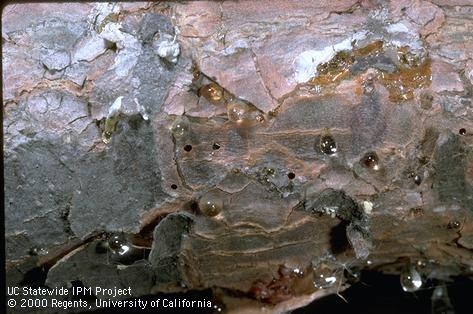
Pine trees do best when planted in well-drained soil in full sun, and most species need little water once established. Trees can ward off attacks by many insects and diseases if taken care of properly.
Several diseases can affect pine trees, such as rusts, blight, and root rot. Disease symptoms vary, but may include discoloration of leaves or needles, cankers, galls, and ooze.
Pine trees are susceptible to damage by over 20 different kinds of insects, including aphids, borers, caterpillars, mealybugs, and weevils. Look for signs of insects by examining needles, branches, and bark. To learn about some of the various beetles attacking trees and devastating pine forests, read the article Pines, Drought and Beetles.
When your pine tree looks unhealthy but you can't find any traces of an insect pest or disease, a possible cause is an environmental disorder. These include drought, frost, mineral deficiencies and excesses, and others. Environmental, or abiotic, disorders can be difficult to diagnose.
See a larger list of diseases, insects, and environmental disorders that affect pines by visiting the Pests in Gardens and Landscapes: Pine web page. For help diagnosing a problem, contact your local UC Master Gardener office.
You can also read about tree deaths caused by the drought and other factors as well as how to keep your trees healthy by visiting the UC ANR Forest Research and Outreach page on Tree Mortality.
